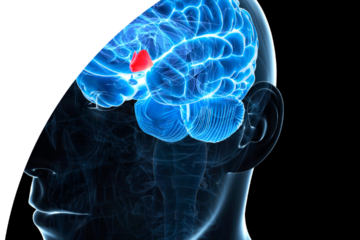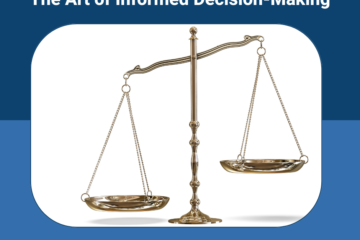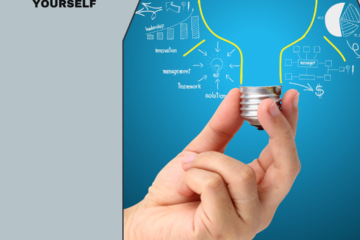
Introduction:
People often think of creativity and efficiency as being at odds with each other, but they are actually the driving forces behind all groundbreaking projects. They’re like the two sides of a coin: you can’t have one without the other. Whether you’re an artist painting a canvas, a businessperson planning the next big move, or an academic breaking down the walls of standard thought, combining the best parts of these two forces can make your work much better and more powerful.
Think about how big a blue sky is. It’s limitless and full of possibilities, just like raw imagination. It’s a big canvas where thoughts can grow, change, and dance easily. Productivity, on the other hand, is like an architect’s plan: it’s well thought out, exact, and focused on the little things. It takes the vastness of the sky and builds buildings out of it.
The magic is at the point where these two meet. Being creative brings ideas to life and gives them a reason for being. Productivity carefully carves out these ideas, turning them into goals that can be reached. Productivity is the planned stroke that gives the art meaning, while creativity may look like a random splash of color on a white board.
They work together like a symphony, with creativity writing the melody and efficiency arranging it, making a masterpiece that is full of purpose and passion. Let’s peel back the layers and learn more about this interesting way that creativity and productivity work together.
Striking the Balance: Creativity and Productivity in Symbiosis

Creativity and efficiency are like two strong towers that stand at opposite ends of the vast world of making things happen. It’s impossible to overstate how important they are, and knowing how they work together in complex ways can help you understand how groundbreaking projects are planned and carried out.
The Creative Spark: The Engine of Innovation
At its core, creativity is the basic soup from which all new and important ideas come. It’s an endless ocean, an intangible force that’s full of possibilities and promise. This is the place where new thoughts not only come up but also grow. There is no judgment there, and people are urged to let their minds wander, explore, and push the limits of what they can think and say.
“What if?” and “Why not?” are the most important questions for creativity. It’s not afraid to question the way things are and asks us to imagine a different world. Risks aren’t just taken here; they’re praised. Failure is a chance to learn, and problems are a chance to come up with new ideas. Creative people don’t stay in the present; instead, they jump into the great unknown, always looking for something new and asking questions.
When it comes to a business or project, creativity is the part where new ideas are born. During the brainstorming process, everyone’s ideas are heard and the boldest ones are given a chance to shine.
Productivity: The Gears that Drive the Machine
If creation is the heart, then productivity is the blood flow. It’s what turns creative ideas into real things in their raw, crude forms. In the same way that gears in a machine control its function, making sure it runs smoothly and at its best, productivity improves, simplifies, and pushes the implementation of these early ideas into action.
Methodical, organized, and disciplined work leads to productivity. It’s a step-by-step plan for getting to the place where imagination sets the goal. Asks: “How can we achieve this efficiently?” Productivity is the use of tools, techniques, and methods that make the best use of time, resources, and effort. It’s about making plans, assigning tasks, and keeping track of progress.
When it comes to work, productivity starts when the brainstorming is over and the room is no longer buzzing with joy. The project manager sets goals, the team decides on the best ways to reach those goals, and the project is constantly checked on and adjusted to make sure it stays on track.
The Inextricable Link
It’s not just one thing that leads to the other; creativity and efficiency work hand-in-hand. You can’t have one without the other. No matter how novel an idea is, it doesn’t mean much if nothing is done with it. On the other hand, acting without first having a well-thought-out plan is like sailing without a compass.
Creativity and effectiveness are two important parts of any business that wants to succeed. This is what creativity gives us: the dream, the vision, the “what” and the “why.” It gives you a reason and a way to go. When it comes to this goal, productivity, on the other hand, lays out the “how.”
It’s important to understand and respect the balance between creativity and productivity as we work hard to achieve our goals. Like the two sides of a coin, they have different points of view but the same main goal: to build, innovate, and achieve. When used together in the right way, this powerful pair can produce results that are not only useful but also ground-breaking. The dance between the creative jumps and the disciplined steps of getting things done is where the real magic happens.
The Perils of Imbalance: Creativity and Productivity in Isolation
The way that creativity and efficiency work together is a lot like a well-planned dance. Every step and movement is important for the whole show. But what happens when one dancer goes on stage by herself, without the other to keep them balanced? The effects aren’t always pleasant.
Creativity Unrestrained: A Symphony without Direction
Imagine a world where productivity doesn’t exist and imagination is the only thing that drives people. Such a situation creates a setting that is full of new ideas, energy, and innovations. For many, this may seem like a dream come true, but it comes with risks.
If you don’t get things done, your imagination is like a river that flows everywhere without having any depth or direction. As a result, there was a flood of ideas, all of which had promise but were lost in the huge number of them. It’s like those brainstorming meetings where everyone leaves feeling energized by all the great ideas they came up with but later realizing that they haven’t made much progress. There are no specific plans for making ideas come true, so they stay vague.
Not only inefficiency but also a lack of drive are at risk here. Teams may feel stuck, coming up with ideas all the time but rarely putting them into action. Over time, this can make people lose hope and start to wonder what the point and effect of their efforts are.
Productivity Sans Creativity: The Clockwork Realm
In the other direction, productivity rules the world, and systems, efficiency, and execution are the most important things. You might think that this kind of scenery is the best example of organization and efficiency at first glance. But if you scratch below the top, you can see the cracks.
When people aren’t creative, they can get stuck in a loop of doing the same things over and over again. People and businesses may be very good at what they’re doing now, getting results with machine-like accuracy. In a market that is always changing, though, it’s possible to become outdated without the fresh air of creative thinking.
In this case, stagnation is the quiet killer. If a company doesn’t come up with new ideas, it’s likely to fall behind. Think of all the companies that were once the best but failed because they didn’t change with the times or didn’t realize how powerful a creative disruptor could be.
Also, focusing too much on getting things done at the cost of being creative can take away the fun and passion from work. Employees may get stuck in a cycle of boring tasks, which can make them less satisfied with their jobs and, in the long run, hurt the organization’s health and happiness.
Striking the Right Note
The risks of putting more weight on one over the other show how important it is to take a fair view. Productivity and creativity don’t have to be opposites; in fact, they work best when they do. Businesses and people can deal with the problems of today by making sure that creative ideas are put into action in a strategic way. This way, they can keep both creativity and efficiency in their toolbox.
Nurturing Both Creativity and Productivity

The way that creativity and productivity work together is like a duet, where each person plays a key part. To really bring out the best in both of them, you need to know how to develop and grow both of them. Let’s look more closely at the ways to make this friendship work better for everyone.
1. Dedicate Time for Unbridled Exploration and Structured Execution
The Sacred Space for Creation:
Setting aside time to think of ideas without any restrictions is like letting yourself dream without limits. In a world full of due dates and tasks that need to be done, it’s important to set aside time to just let your thoughts wander. This space with no interruptions or stress turns into a place where inspiration grows.
Picture a painter in front of a blank surface. There are no expectations or set outcomes; there is only the ability to speak. In the same way, this time can be thought of as a nursery in a business or personal project, where new ideas are given the warmth and room to grow.
Transitioning to Execution:
It’s just as important to come back with a different lens after this creative session is over—the lens of production. After splattering paint on the board, this is where the painter takes a step back to look at it and make changes. The ideas that came up during the creative burst are now being looked at, reduced, and put together into plans that can be put into action. When you have a clear goal and direction, it’s easy to see how to get there.
2. The Power of Constraints: Catalysts for Innovation
The Creative Paradox:

At first glance, limits might look like things that slow you down. After all, doesn’t imagination mean thinking of no limits? Surprisingly, limits can be very useful for coming up with new ideas. When an artist only has a few colors to work with, they have to mix and blend them to make shades they might not have thought of otherwise.
In the same way, when a business doesn’t have unlimited cash, time, or resources, it has to prioritize, come up with new ideas, and often find solutions that they wouldn’t have thought of before. People often have “Eureka!” moments when they know that the usual ways of doing things won’t work. This forces them to come up with new plans and answers.
Bridging with Productivity:
The rules of productivity start to work once a creative answer within a limit has been found. It’s like making a map of an unexplored path through a dense forest; now the trip is about using it correctly. How can the answer be put into action with the restrictions that have been set? Which way is the most efficient way to get what you want? Here is where strategy planning, allocating resources, and managing time—the three things that make you productive—become most important.
3. The Mirror of Regular Reflection
The Power of Self-Assessment:
People and groups need to stop and think about their direction, just like sailors check the compass often to make sure the ship stays on course. When you think on a regular basis, it shows you whether you are leaning more toward ideas without action or action without new ideas.
At these stages, you can see things more clearly. Are plans that can be put into action coming out of brainstorming sessions? Or are they just times when you wish things were different? On the other hand, has the need to be quick and accurate made the process mechanical and empty of new ideas?
Recalibrating the Balance:
With these evaluations, one can make smart choices. If you have too many ideas but not enough time to put them into action, it might be time to move on to a more productive phase. When new ideas stop coming to you, it might be time to take a step back and get them going again. When you recognize and adapt to this ups and downs, you can keep a healthy mix between being creative and getting things done.
4. The Symphony of Collaboration
A Melange of Minds:
The great thing about working together is that no two thoughts are the same. One person may be great at coming up with new ideas, while someone else may be great at planning, organizing, and carrying them out. Teams can use a wide range of resources when they bring together people with different skills.
Not only do people come up with ideas together, but they also improve, build on, and carry them out effectively in joint settings. Feedback loops are tighter, which makes sure that ideas are always getting better.
The Harmony of Varied Strengths:
When people on a team know and use each other’s skills, they can be very effective. Recognizing that some people are better at “dreaming” than “doing” and creating a setting where both are valued can lead to a balance of creativity and productivity.
5. The Digital Aide: Tools and Technology
Harnessing Digital Creativity:
These days, many pieces of software and apps can be used to help us be creative. For example, mind-mapping tools let us see our thoughts visually, which can help us connect the dots and see the bigger picture. These platforms are like digital canvases where you can draw, expand, and link your thoughts.
Streamlining with Tech:
On the other hand, there are many tools that are made to make completion go smoothly. Apps for project management, such as Trello or Asana, help keep track of jobs, set goals, and make sure they are delivered on time. They take vague ideas and turn them into detailed plans, which speeds up the process from thought to completion.
Conclusion:
Creativity and productivity are often seen as opposing forces, but they are actually complementary forces that can be used to achieve success in various endeavors. Creativity provides a vision of what could be, challenging the status quo and envisioning a world filled with possibilities. Productivity, on the other hand, bridges the gap between the ethereal and tangible, providing structure, discipline, and actionable steps to realize this vision. Without creativity, productivity may become a rote exercise lacking purpose and direction. The creative spark ensures that the output is not only productive but also meaningful. Understanding the delicate balance between envisioning and executing is crucial in personal, professional, and entrepreneurial pursuits. The most efficient processes and strategies require innovation to remain relevant and impactful. Therefore, we should view creativity and productivity as partners, not choices to be made but as partners to be embraced.



0 Comments